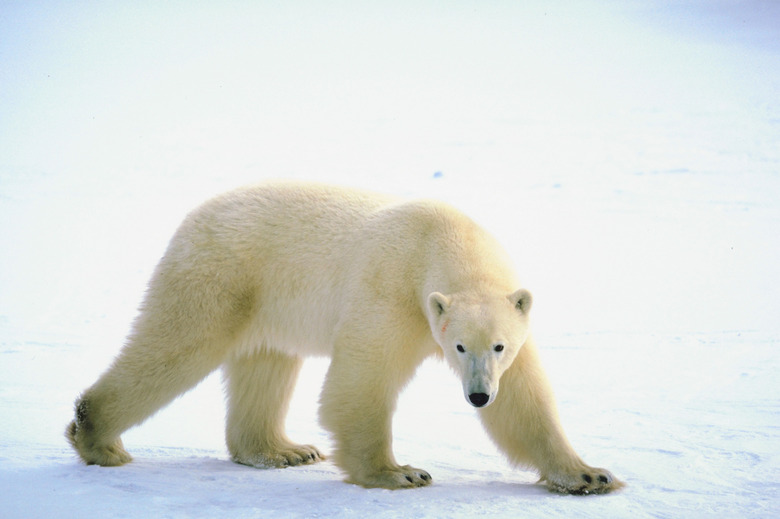Environmental Dangers In The Tundra
With its harsh weather and scarce resources, the tundra is one of the most dangerous biomes in the world. In addition to the extreme cold, dangers in the tundra are as disparate as predation from polar bears to dangerous levels of ultraviolet radiation. Despite these threats, many people make their living working in and around the tundra.
Extreme Cold
Extreme Cold
While daytime highs in the summer months average around 50 degrees Fahrenheit, the average daily high temperature during the long Arctic winter is 0 degrees — making frostbite and hypothermia the most immediate environmental dangers associated with the tundra. Those with diabetes or heart conditions are particularly vulnerable to extreme cold, and wearing several layers of clothing covering as much exposed skin as possible can help prevent both frostbite and hypothermia. People in extremely cold environments should also avoid overexertion or getting wet.
Scarce Food Sources
Scarce Food Sources
The extreme cold of the tundra also places a high demand on the body — spiking calorie usage per day up to as high as 12,000 in some cases. This high rate of metabolism exacerbates the fact that there is very little readily available food in the tundra. Except during the short summer, the ground is frozen — making plants unavailable. Animals in the Arctic are high in fat and can be a source of food — if they can be caught. One animal that should not be eaten is the black mollusk, which is poisonous.
Polar Bears
Polar Bears
Polar bears, who live in the tundra, are considered one of the most determined and deadly predators on Earth. While polar bears are typically interested in hunting seals, they have been known to track and kill seal hunters. Recent changing conditions in the Arctic have caused polar bears to expand their range south in search of food — increasing their interactions with humans. People used to living near polar bears typically travel in numbers during October and November — when the bears are on the move toward expanding sea ice.
Ultraviolet Radiation
Ultraviolet Radiation
The mass use of chlorofluorocarbons over the course of decades has thinned the ozone layer over the Earth's polar regions where the tundra is located. The ozone layer protects the Earth from dangerous ultraviolet solar radiation — which has been known to cause skin cancer in humans and genetic damage in other organisms. Once thought to be relegated to extreme latitudes, several ozone-depleted air masses have been seen moving down from the North Pole and into Scandinavia. Sensitive people in these areas could be sunburned within minutes.
Cite This Article
MLA
Smith, Brett. "Environmental Dangers In The Tundra" sciencing.com, https://www.sciencing.com/environmental-dangers-tundra-23668/. 24 April 2017.
APA
Smith, Brett. (2017, April 24). Environmental Dangers In The Tundra. sciencing.com. Retrieved from https://www.sciencing.com/environmental-dangers-tundra-23668/
Chicago
Smith, Brett. Environmental Dangers In The Tundra last modified August 30, 2022. https://www.sciencing.com/environmental-dangers-tundra-23668/
